Do you want a 3m/10ft rose you can tie onto a small arbor or trellis where it will bloom in bright colors all season long? Climber.
Do you want to unleash a rose to scramble up and down the side of a barn and delight visitors with its clusters of soft-hued flowers in the late spring? Rambler.
There are other distinctions between climbers and ramblers that I’ll discuss in this article, but I begin with the thing that matters most to hobbyists: the way they’re typically used in the garden.
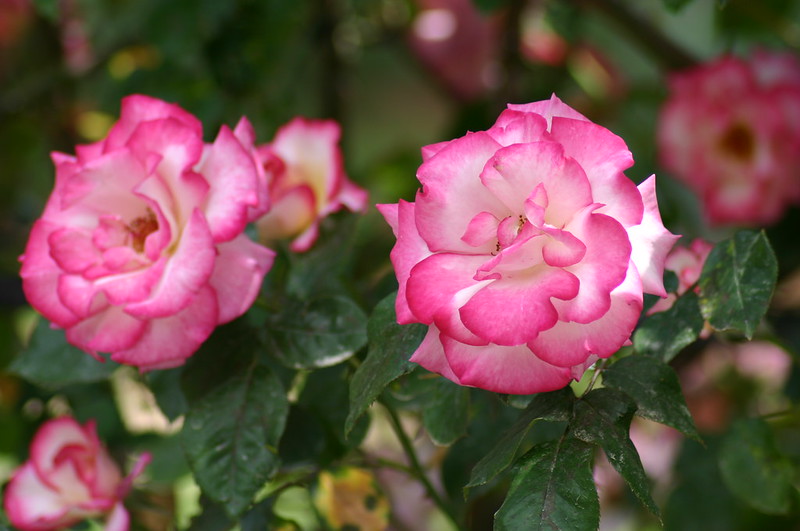
See the climber ‘Handel’ in the above picture. It exemplifies some of the characteristics of a modern climber. They’re generally (but not always):
- Repeat blooming
- Come in a full range of colors, including pure red, bright orange, and vibrant blends like modern hybrid teas and floribundas
- Solitary or cluster flowering
- Around 3m (10ft) tall on average for a small to medium climber
- Variable hardiness
- Complex hybrids
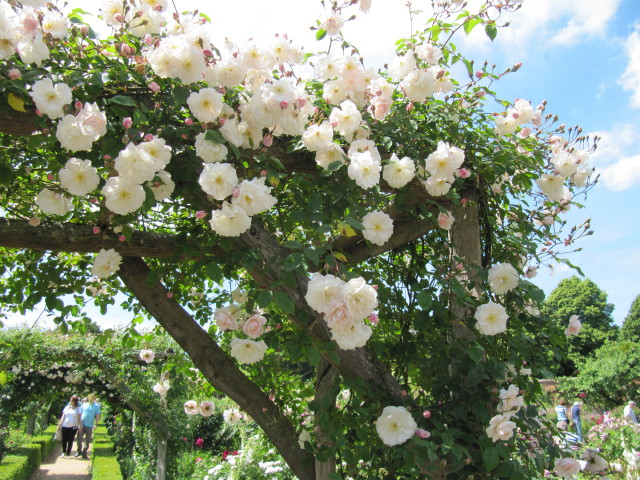
Now have a look at ‘Adélaïde d’Orléans’ as an example of a rambler, with impressive clusters of flowers in a delicate muted color. What a show! Ramblers generally are:
- Once-blooming
- Limited in their range of colors. More subtle tones of white, pink, yellow
- Cluster flowering
- Quite large. 5m (16ft) + would not be uncommon
- Somewhat hardier than modern climbers on average
- Closer relate to wild species roses
These generalizations are for convenience more than precision – and I fully expect that there are readers ready to volunteer exceptions on almost any one of these characteristics. What about ‘Ghislaine de Feligonde’ a repeat-blooming rambler? Or ‘Bleu Magenta’ or ‘Chevy Chase’ to challenge the matter of subtle pastel tones? Rule-breakers aren’t hard to find in these groups.
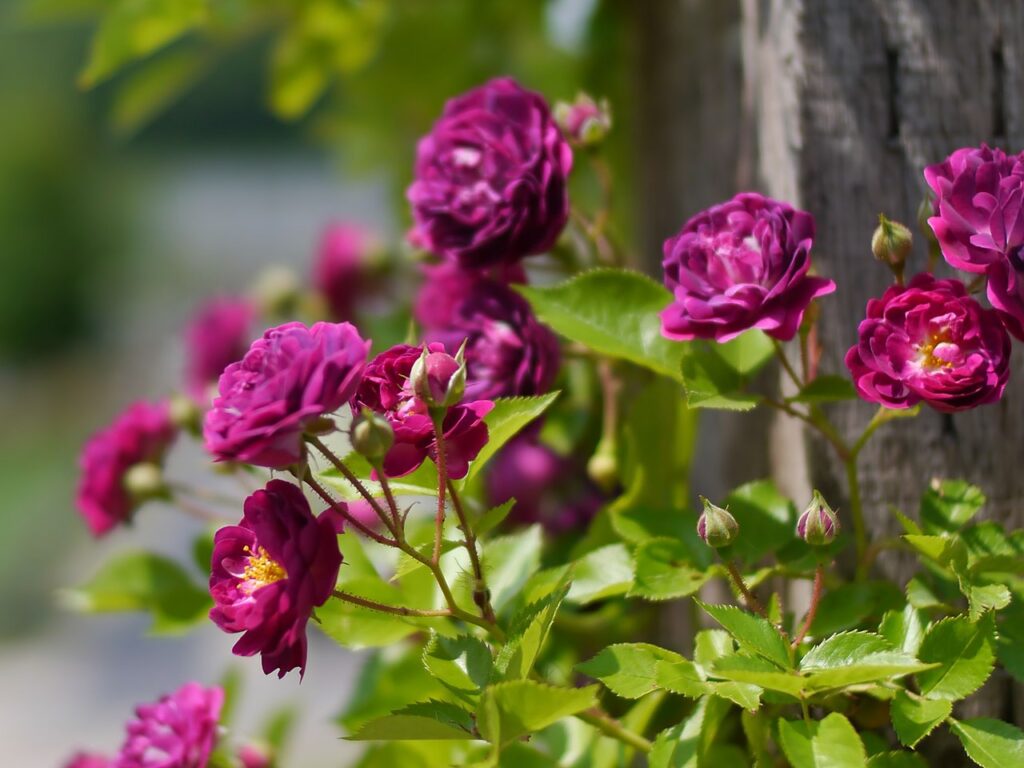
Breeding
If you want to get technical, ramblers are defined by their close genetic relationship to wild roses that have that same “expansive” growth habit. The major groups of ramblers are the near-direct offspring of the four rose species listed in the picture below:
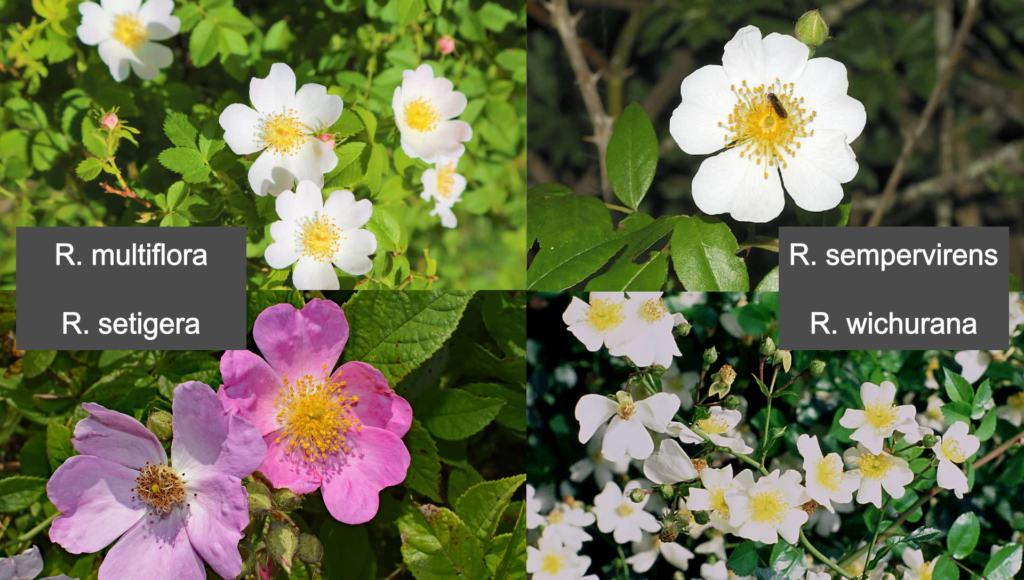
These nearly wild genes account for their predominantly once-blooming (late spring/early summer) annual flowering cycle, and also for their more natural range of colors, with individually smaller, simple blooms in clusters.
Climbers are not defined by genetics, but is rather just a description of usage or growing habit, so they tend to be far more diverse in flower form, color and overall growing habit. I made a video a while back where I looked at the lineage of roses in a “family tree” of sorts. Here’s a clipping from that video:
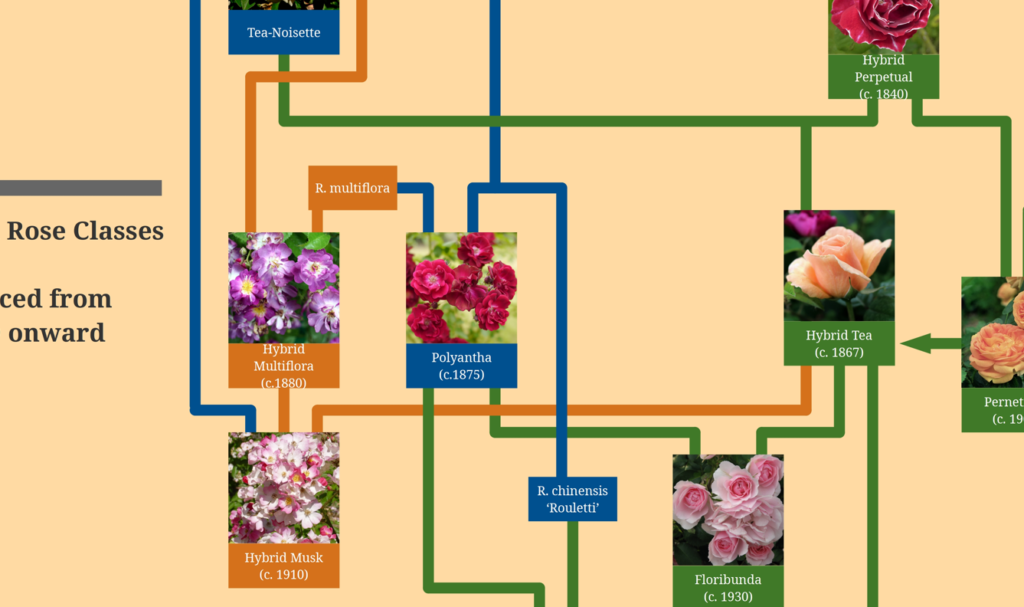
What you’ll find is that climbing roses are identified from every corner of this chart, and from all different classes. Hybrid tea? ‘Climbing Peace’. Floribunda? ‘Iceberg’. Miniature? ‘Warm Welcome’. Hybrid Perpetual? ‘Souvenir du Docteur Jamain’. Shrub? ‘Constance Spry’.
That makes it difficult to say anything particular about the climbers, because some are more like their Bourbon parents, and others are very much a Hybrid Musk. They tend to have repeat blooming in common between them, but even that’s not a firm rule.
Pruning and Training
Ramblers prefer a light touch when it comes to pruning. They bloom on mature stems (at least one season old) so a severe cut back will definitely impact flowering the following year. The safest time to prune them is directly after their annual flush of flowers.
Climbers, as repeat bloomers, can accept a little more assertive pruning for shape, size and rejuvenation – and most gardeners will do this structural pruning in late winter or early spring, while the framework is still laid bare to the eye. They still perform better if you leave a significant portion of their main stems in place, but targeting damaged, diseased & crossing stems is a must. Trim the laterals (the smaller flowering branches coming from the main stems) down to a node or two.
I want to share a couple of videos with you that will help to highlight some of these varieties. First my video on “The Difference Between Climbing and Rambling Roses” with some examples of notable roses from each class:
And while I’m sharing my picks of roses, here’s another video I made with picks for great garden climbers:
